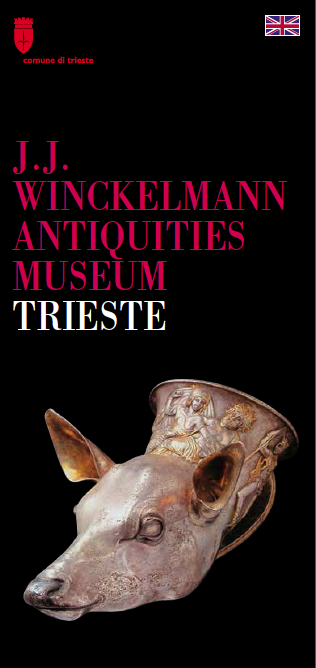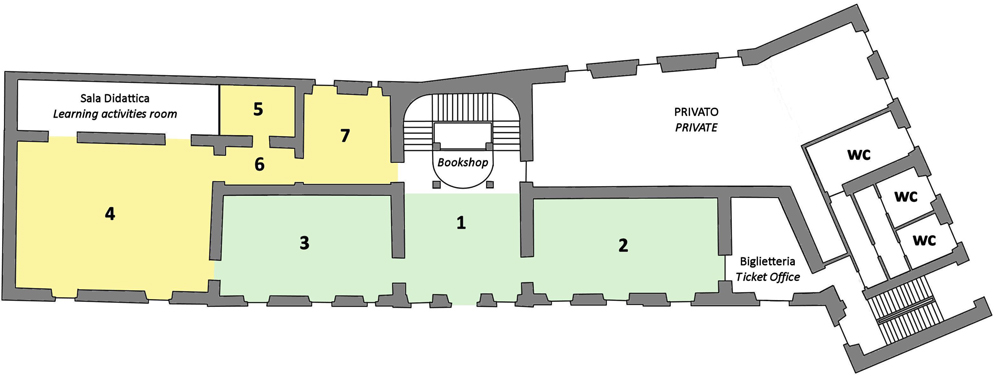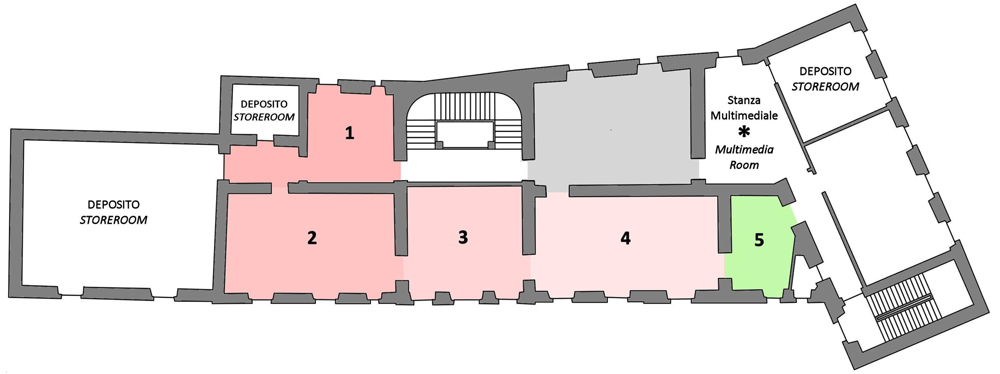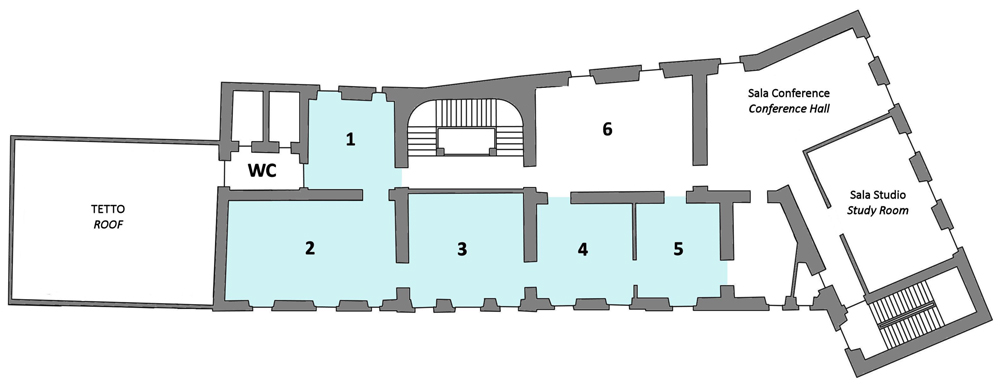Civico Museo d’Antichità “J.J. Winckelmann”
già Civico Museo di Storia ed Arte – Orto Lapidario
Piazza della Cattedrale 1
Via della Cattedrale 15
Via S. Giusto 4 (vstop za invalide)
34121 Trieste
Tel. +39 040 310500
museowinckelmann@comune.trieste.it

The Museum is mainly dedicated to local archaeology (prehistory, early history and Roman times), but it also hosts collections of Egyptian, Cypriot, Greek, Southern Italian and Etruscan objects, as well as a small collection of Mayan pottery from El Salvador.
The idea of creating in Trieste a Museum for displaying together antiquities found in the city and in the surrounding territory (Istria and Aquileia) was born in the 19th century and found in the local historian Domenico Rossetti one of its main supporters, since he also promoted the building of a monument to the memory of Johann Joachim Winckelmann, the father of archaeology, who was murdered in Trieste in 1768. Orto Lapidario slowly took its form around his cenotaph (1833) and was opened to the public in 1843.
At the same time, the collections of the Museum grew until, in 1925, they were put on display in the adjacent building of Via della Cattedrale 15.

THE VISIT
Orto Lapidario has four levels, dedicated to sacred, honorary and funerary reliefs and inscriptions from Aquileia, Istria and Trieste (part of the objects fromthe city is on display in the Lapidario Tergestino inside the Castle of San Giusto). Inside the classical-style temple (1874) at the bottom of Orto Lapidario, thereare Greek and Roman sculptures that were part of theMuseum collections since the 18th century, together with Winckelmann’s monument (A. Bosa, 1833).
In the lower garden in front of the Museum building(known as Giardino del Capitano – Captain’s Garden, since it was property of the captain that ruledthe city on behalf of the Austrian emperor), visitors can walk up a portion of the 15th/16th-century city walls and towers. In the garden there also are architectural elements, sculptures, coats of arms and inscriptions,saved during the demolition of old buildings. The Museum exhibits, on the ground floor, the new display dedicated to the Roman world. In the entrance hall and in rooms 2 and 3 there are sculptures and everyday objects: marble and limestone portraits of emperors and common people (1st century B.C – 3rd century A.D.), figures of deities, sarcophagi reliefs from Attica and many bronze,terracotta, glass, amber and bone objects, as well as semi-precious gems. They mostly come from house sand cemeteries of Istria and Aquileia.
The Egyptian section (rooms 4-6) hosts more than 1,000 objects from the land of the Nile, offering an overview on religion and funerary rites. There are human and animal mummies, wooden coffins,limestone and granite sarcophagi, funerary stelae, canopic jars, sheets from a Book of the Dead papyrus,together with an important collection of funerary figures (shabtis), amulets and small bronzes connected to the magic-religious world. In room 7 the Graeco-Roman, Coptic and Islamic Periods are exemplified by painted mummy pectorals, terracotta figurines and glazed ceramics.
The first floor is completely dedicated to localPrehistory and Early History, thanks to the objects that Carlo Marchesetti gathered during the 19th and early 20th century. In Prehistory – or Stone Age – Room, stone and bone implements and terracotta objects that were found in dwelling places and caves of the Karst around Trieste are on display. In Early History Rooms, instead, a wide range of findings come from Castellieri (hillforts, fortified settlements that were typical of the Karst from the half of the 2nd to the half of the1st millennium B.C.) and from the site of Santa Luciadi Tolmino (Most na Soc i, now in Slovenia), whose fabulous grave goods are precious testimonies of IronAge funerary rites.
In a small room the “Cesare Fabietti Mayan pottery collection” is on display. The objects come from El Salvador (600-1000 A.D.).
Classical Collections are visible on the second floor.They include a variety of Cypriot pottery and of Corinthian, Attic (both in red-figure and black-figure styles) and Etruscan vases, as well as an outstanding collection of Southern Italian Greek-style pottery from the Archaic to the Hellenistic Period. All these formerly belonged to private collectors. Amphorae,kraters and elegant vases are exhibited in rooms that recall the 19th-century taste in museum design.
The Taranto Collection includes terracotta figurines and antefixes, a bronze jug and the most important object of the Museum, the fabulous silver rhyton (ritual drinking vessel) shaped as a fawn’s head,with the scene of Boreas kidnapping Orithyia between Athena and Erechtheus (beginning of the 4th centuryB.C., from the Black Sea area, found in Taranto). Writing through history (from 3rd millennium B.C.to Roman times) is exemplified by cuneiform and hieroglyphic inscriptions, as well as by examples of the oldest alphabets.
Ground floor

Ancient Rome
- Entrance hall: Reliefs from Attica
- Roman sculpture and deities
- Daily life in Roman times
Ancient Egypt
- “Dolzani” Room
- Room of the coffin
- Room of the Coptic relief
- Egypt after the pharaohs
First floor

Prehistory
1. Prehistory: the caves in the Karst around Trieste
Early Historical Times
2. Bronze and Iron Age I: hillforts
3. Iron Age: Santa Lucia di Tolmino
4. Iron Age II: the arrival of Celts
5. The “Cesare Fabietti” Maya Collection
Second floor

Ancient Greece and related subjects
- Cyprus collection
- Greek and Etruscan vases
- Collections from Magna Graecia
- Room of the rhyton
- Taranto collection
- Writing through history
Comune di Trieste – Video by TCD with the contribution of Friuli Venezia Giulia